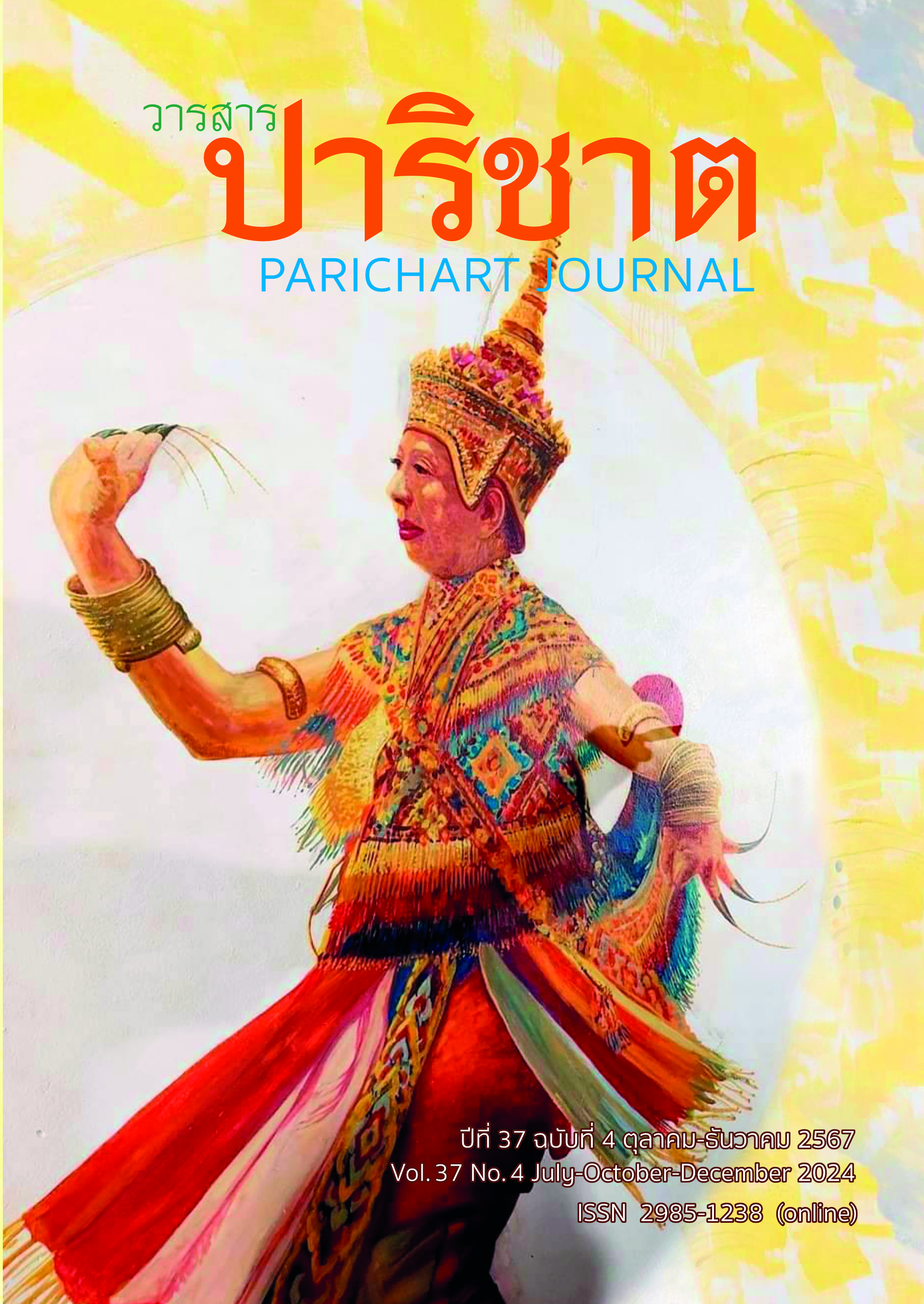Chinese Sources in Thai Scholarly Historical Works
Main Article Content
Abstract
Scholarly works on modern history of Thailand have long emphasized a variety of sources, as different materials reflect different perspectives and narratives. Despite a great number of primary sources from foreign countries used in Thai scholarship, little attention has been paid to Chinese materials. This is unfortunate as China has played a crucial role in Siamese/Thai history. Therefore, this article attempts to explore a variety of Chinese sources in the historical study of Siam/Thailand. It demonstrates how the use of Chinese materials can provide valuable insights into various aspects of Siamese/Thai society, including the relationships between Thailand, China and other states. To classify Chinese source materials, this paper is divided into three sections, i.e., Chinese chronicles, Chinese archives, and Chinese-language miscellany. It will examine how Thai scholarly historical works have interpreted the Chinese materials from past to present.
Article Details

This work is licensed under a Creative Commons Attribution-NonCommercial-NoDerivatives 4.0 International License.
References
Ngamcachonkulkid, S. (2022). Overseas archives, HRH professor. National Research Council of Thailand. (in Thai)
Veraphol, S. (1977). Tribute and profit: Sino-Siamese trade from 1652 to 1853. Harvard University Press.
Promboon, S. (1971). Sino-Siamese tributary relations, 1282-1853 [Doctoral dissertation]. University of Wisconsin.
Wade, G. (2000) The “Ming shi-lu” as a source for Thai history: Fourteenth to seventeenth centuries. Journal of Southeast Asian Studies, 31(2), 249-294. http://www.jstor.org/stable/20072252
Pongsripian, W. Sukolrattanamethi, P. (2017). Ming Shilu, Qing Shilu: The Veritable Records of Ming and Qing dynasties on Siam. Princess Maha Chakri Sirindhorn Foundation. (in Thai)
Piromanukul, R. (2023). Utilization of documentary evidence: The case of Chinese documents and inscriptions in analysing Thai history. Seminar on History Teaching for 21st Century Education. Royal City Hotel and Princess Maha Chakri Sirindhorn Anthropology Centre. (in Thai)
Matsuda, E. (2011). Import of prosperity luxurious items imported from China to Siam during the Thonburi and early Rattanakosin periods (1767-1854). In E., Tagliacozzo, & W. C. Chang, (Eds.), Durham Chinese circulations: Capital, commodities, and networks in Southeast Asia. Duke University Press.
Matsuda, E. (2004). The last Siamese tributary missions to China, 1851-1854, and the 'Rejected' value of Chim Kong. In W. Gungwu, & N. C. Keong, (Eds.), Maritime China in Transition 1750-1850. Harrassowitz Verlag.
Chonlawon, P. (2012). History of port polities in Malay Peninsular during the 16th to the 18th century: A study from the Chinese and Japanese sources. Thailand Science Research and Innovation. (in Thai)
Chonlawon, P. (2020). Forgotten history: Pattani, Yala, and Narathiwat in the seven provinces era. Thammasat University. (in Thai)
Siripaisan, S., & Boosabok, P. (2018). The translation into Thai and study of ancient Chinese records relating to Thailand in connection with the Maritime Silk Road. Princess Maha Chakri Sirindhorn Anthropology Centre. (in Thai)
Boosabok, P. (2022). Chinese documents in the Ming and Qing Dynasty related to Thai History during the period of Ayutthaya. Journal of Arts and Thai Studies, 44(1), 134–145. (in Thai)
Numtong, K. (2021). Evidence of Lanna kingdom in ancient Chinese manuscripts. Department of Eastern Languages. Chinese Section, Faculty of Humanity, Kasetsart University. (in Thai)
Prapagorn, P. (2022). Lawo in ancient Chinese manuscripts: A study of relationship between Lawo and China in ancient Chinese manuscripts and Chinese ancient documents. Journal of Sinology, 17(1), 81–107. (in Thai)
China Association for International Education (2013). Statistics of foreign students in China in 2013. www.cafsa.org.cn/research/show-1500.html/
Yin, H, Ruangkanjanases, A., & Chen, C. (2015). Factors affecting Chinese students' decision making toward Thai universities. International Journal of Information and Education Technology, 5(3), 189-195. DOI: 10.7763/IJIET.2015.V5.500
Zhou, B. (2022) The surrender of Lanna. Matichon. (in Thai)
Murashima, E. (2012). In K. Tiptiempong (Trans.), The birth of the Siamese communist party. Matichon, 2012. (in Thai)
Murashima, E. (1996). In V. Mahatdanobol (Ed. & Trans.), Sino-Siamese politics. Chinese Studies Center, Institute of Asian Studies, Chulalongkorn University. (in Thai)
Wongsurawat, W. (2020). The crown the capitalists: The ethnic Chinese and the founding of Thai nation. Silkworm Books.
Eaksittipong, S. (2020). The crown the capitalists: The ethnic Chinese and the founding of Thai nation, written by Wasana Wongsurawat. Journal of Chinese Overseas, 16(1), 135–147. https://doi.org/10.1163/17932548-12341417
Eaksittipong, S. (2021). Writing the Chinese to become Thai (2nd ed.). Matichon. (in Thai)
Anderson, B. R. O’G & Mendiones, R (eds.). (1985). In the mirror: Literature and politics in Siam in the modern era. Duang Kamol.
Skinner, G. W. (1957). Chinese society in Thailand: An analytical history. Cornell University Press.
Skinner, G. W. (1958). Leadership and power in the Chinese community of Thailand. Cornell University Press.
Cushman, J. W. (1989). In L. Suryadinata (Ed.), “The Chinese in Thailand,” The ethnic Chinese in the Asian states: Bibliographical essays. Institute of Southeast Asian Studies.
Eaksittipong, S. (2023). To be Chinese is to feel Chinese. Matichon. (in Thai)
Bualek, P. (2000). The analysis of Thai commercial bank capitalists, 1932-1973 (2nd. ed.). Siam. (in Thai)
Bualek, P. (2002). Characteristics of Thai capitalists between 1914–1939. Phanthakit. (in Thai)
Tungkeunkunt, K. (2013). Rediffusion: History of Chinese broadcasting in Thailand. Aan Journal, 5(1), 172-185. (in Thai)
Kulsangcharoen, M. (2005). Sing Sian Yit Pao Newspaper: The reflection of Thai society during field marshal Srisdi Dhanarajata government 1958–1963 [Unpublished master’s thesis]. Srinakharinwirot University. (in Thai)
Tantasuralerk, S. (1989). Remittance among overseas Chinese in Thailand. Institute of Asian Studies. (in Thai)
Hong, L. & Li, D.G. (2006). Qiaopi culture in Thailand. Thai-Chinese Studies Association. (in Chinese)


